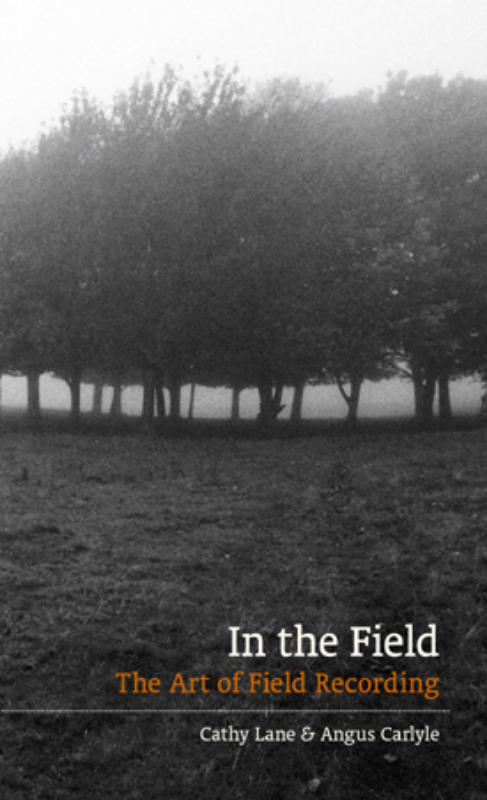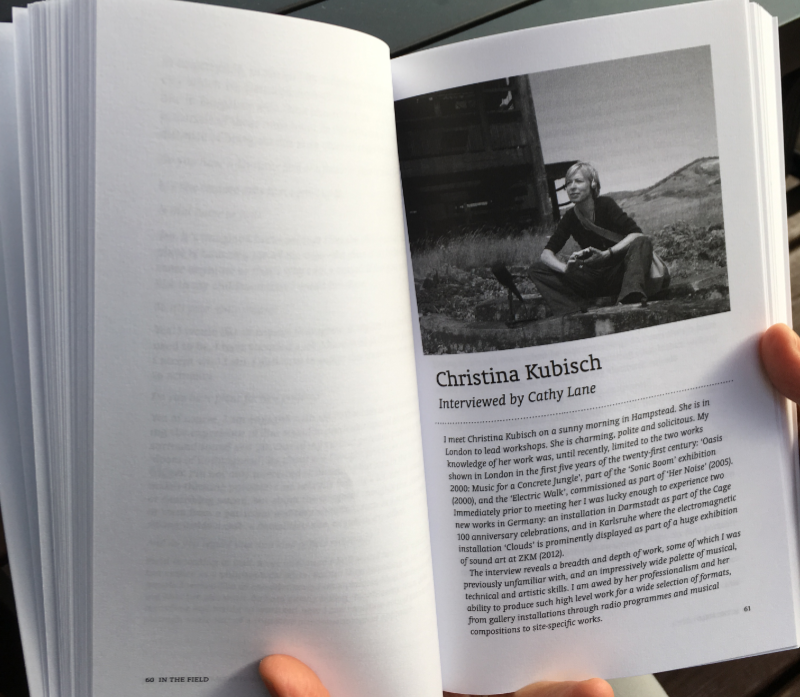Book Review: In the Field - The Art of Field Recording

Doing a book review about In the Field – The Art of Field Recording, by Cathy Lane and Angus Carlyle, was actually quite hard to pull off. I originally saw it recommended in the Lines community (https://llllllll.co/), and tracked it down on Amazon. Ordered it, waited, got notified of a delay, waited more – then eventually the order was cancelled. Six months had gone by, and still no book.
I found a different vendor, and eventually got a copy shipped in from England. And it was worth the wait. This is not a how-to guide to field recording. Rather, it is a set of interviews with some of the luminaries of the field recording world, and a great opportunity to hear about the backgrounds and practices of the masters.
Overview
The format of the book is pretty straight-forward: a set of questions was developed to use for each interview, but there were allowances for the interviewer to expand or extend the conversation. There are expected questions like “What do you look for in a recording?” and “Whose work do you find inspiring?” However some questioning explores more metaphysical areas, like “How do you think you are present in your recordings?” and “Why field recording?” It was good to see these interviews begin from the same starting point, but it was also interesting to see how the discussions diverged for each individual.
And diverge it does. Whether we hear about the improvisational use of voice by Viv Cunningham, or the esoteric microphone choices of Jez Riley French, we get a broad range of visions for field recording as a subject. We also get to see a lot of growth in the field – the development and availability of sound maps and the maturing of location documentation are found within most of these discussions. But there is also room for idiosyncratic expressions as well, which prevents the artists from coming across as sound-alike academics.
It is the range of artists that make In the Field so powerful. The variety of voices all add to the richness of the artform, and we get to hear stories of the ‘early days’ of sonic river mapping, the difficulties of lugging the tonnage of early equipment, and the journey each artist took to present their work to the public. The artists’ perception of Sonic Art – and their place within it – is unique as well, so we get to see many angles of the story.
What the book seldom did was dive into the technicalities of field recording. Very few hardware bits were discussed, and software was almost completely absent. This is probably useful, since it will prevent the book from aging too quickly. When equipment was discussed, it was normally in the abstract – general discussions about binaural mics and highly portable recorders can be found, rather than descriptions of specific equipment.

Highlights
One of the highlights for me was the description of Budhaditya Chattopadhyay’s cinematic approach to both recording and composition. This took me on a pleasant conceptual journey, given his description of both focus and context within a field recording. He was one of the people that most clearly described his vision for the work that he created, and his film-like methods opened my eyes to a unique vision for recording work.
Another highlight was Jana Winderen’s discussion about the use of hydrophones to listen to worlds outside of our norm – including ultrasonic communication among underwater species. The idea of completely different sonic worlds being opened up by a simple change in approach revealed my myopia about where sounds exist. I also loved her description of the sounds she hears as a story the underwater world at that time and place.
But perhaps the most intriguing interview of the book was the discussion with Annea Lockwood. This iconic sound artist described both her career and the development of her work, including early performance efforts at The Kitchen (in the early 70’s) and embrace of rivers as a palette for her work. From her work on the Danube to the mapping of the Hudson, Lockwood has defined many norms for field recordings. Her description of her development in field recording was wonderful.
Conclusion
In the Field had a significant effect on me – it changed my perspectives about field recording, and about the sound of the world around me. One of my upcoming plans is to mimic one of my college professors, Tim Weaver. He would approach important texts with an open notebook and an open web browser; whenever he would run across an unfamiliar name, location or recommendation, he would search for more information, then write down how he would study it further.
That a book can provide this sort of imagined future makes it a treasure. Although it can be difficult to purchase, I can testify that In the Field is worth every hoop you will jump through.
Title: In the Field – The Art of Field Recording
Authors: Cathy Lane and Angus Carlyle
Uniformbooks, Axminster UK (www.uniformbooks.co.uk)
Originally published in 2013, reprinted in 2018
Artists interviewed:
- Andera Polli
- Annea Lockwood
- Antye Greie
- Budhaditya Chattopadhyay
- Christina Kubisch
- Davide Tidoni
- Felicity Ford
- Francisco López
- Hildegard Westerkamp
- Hiroki Sasajima
- Ian Rawes
- Jana Winderen
- Jez Riley French
- Lasse-Marc Riek
- Manuela Barile
- Peter Cusack
- Steve Feld
- Viv Cunningham
by Darwin Grosse on September 2, 2019

